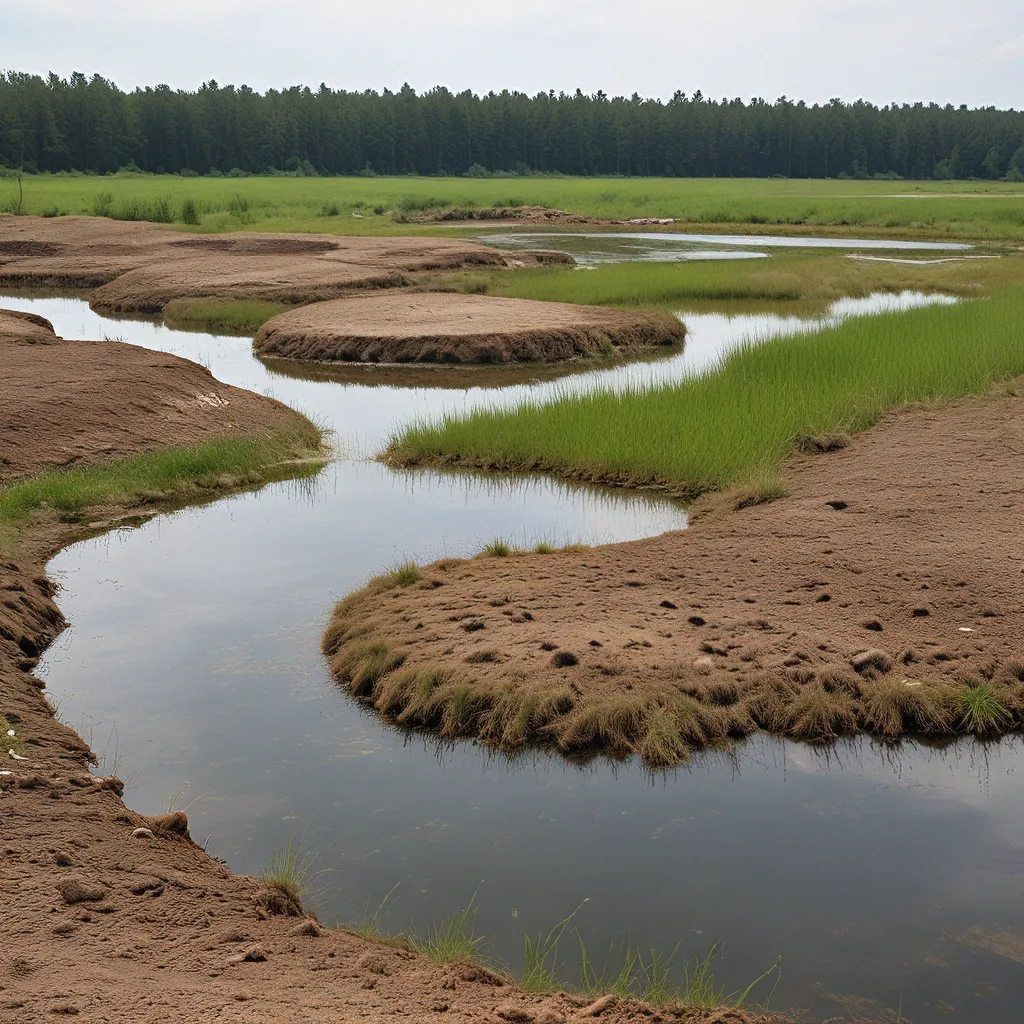
The Winding Path to Clean Water
I remember the first time I visited a wastewater treatment plant. The sheer scale of the operations, the intricate piping, and the bustling activity – it was quite overwhelming. But as I delved deeper into the process, I began to realize the true complexity and ingenuity behind these essential facilities.
Wastewater treatment is not just about removing contaminants; it’s about restoring the natural balance, harnessing the power of wetland ecosystems, and ensuring that the water we return to the environment is clean, safe, and sustainable. It’s a delicate dance between technology and nature, and I’ve been captivated by it ever since.
Uncovering the Hidden Gems of Wetlands
When most people think of wastewater treatment, they envision towering tanks, intricate piping, and energy-intensive processes. But what if I told you that nature has been providing us with the blueprint for effective water purification all along? Enter the humble constructed wetland.
Constructed wetlands are engineered systems that mimic the natural processes found in wetland ecosystems. These verdant oases are teeming with a diverse array of plants, microorganisms, and invertebrates – all working in harmony to break down pollutants, remove nutrients, and restore the purity of the water.
“Constructed wetlands are like nature’s own water filtration system,” explains Dr. Emma Greenfield, a leading expert in the field of ecological engineering. “By harnessing the power of these natural systems, we can create cost-effective, sustainable solutions for wastewater treatment that also provide a wealth of environmental benefits.”
The Symbiotic Dance of Nature and Technology
While constructed wetlands have been around for decades, their integration with conventional wastewater treatment technologies is a relatively recent development. This hybrid approach combines the best of both worlds, leveraging the strengths of each to create a more robust and efficient system.
Traditional wastewater treatment plants rely on a range of physical, chemical, and biological processes to remove contaminants. These include sedimentation, aeration, and microbial digestion. However, these methods can be energy-intensive and may not always be the most environmentally friendly solution.
Enter the constructed wetland. By incorporating these natural systems into the treatment process, we can harness the power of plants and microbes to do the heavy lifting. The wetland vegetation acts as a living filter, trapping sediment and absorbing nutrients like nitrogen and phosphorus. Meanwhile, the diverse microbial communities break down organic matter and transform harmful compounds into harmless byproducts.
“It’s a beautiful symbiosis,” says Dr. Greenfield. “The wetland plants provide the surface area and habitat for the microbes to thrive, while the microbes, in turn, support the growth and health of the plants. It’s a self-sustaining, self-regulating ecosystem that can be incredibly efficient at treating wastewater.”
The Myriad Benefits of Constructed Wetlands
The advantages of incorporating constructed wetlands into wastewater treatment go far beyond just water purification. These natural systems offer a multitude of environmental and societal benefits, making them a truly sustainable solution.
| Benefit | Description |
|---|---|
| **Habitat Creation** | Constructed wetlands provide vital **habitat** for a wide variety of **wildlife**, including **birds**, **amphibians**, and **invertebrates**. This can help to **restore biodiversity** and support healthy ecosystems. |
| **Carbon Sequestration** | Wetland plants and soils are highly effective at **sequestering carbon**, making them a valuable tool in the fight against **climate change**. The **organic matter** and **biomass** stored in these systems can help to **mitigate greenhouse gas emissions**. |
| **Flood Mitigation** | Constructed wetlands can help to **absorb and store excess water** during heavy rainfall events, reducing the risk of **flooding** and **preventing property damage**. This can be especially valuable in urban and coastal areas. |
| **Aesthetic and Recreational Value** | These lush, **natural-looking** systems can **enhance the visual appeal** of a community and provide **recreational opportunities** for activities like **birdwatching**, **hiking**, and **environmental education**. |
Overcoming the Challenges
Of course, the integration of constructed wetlands into wastewater treatment is not without its challenges. Designing and maintaining these complex systems requires a deep understanding of hydrology, ecology, and engineering. Factors like climate, soil conditions, and plant selection must all be carefully considered to ensure optimal performance.
Moreover, the scale and location of a constructed wetland can also be a significant hurdle. In urban and industrial settings, where land is scarce and valuable, finding the necessary space for a large-scale wetland can be a daunting task. Regulatory and permitting requirements can also add to the complexity of the process.
But innovative researchers and forward-thinking practitioners are constantly pushing the boundaries, exploring new technologies and optimizing design to overcome these obstacles. From modular and vertical wetland systems to hybrid approaches that combine natural and engineered solutions, the possibilities are truly exciting.
The Future of Wastewater Treatment
As we look to the future, the integration of constructed wetlands into wastewater treatment promises to be a game-changer for the industry. Sustainability, efficiency, and environmental stewardship will be the hallmarks of the next generation of water purification systems.
“This is just the beginning,” says Dr. Greenfield. “We’re only scratching the surface of what’s possible when we harness the power of nature to solve our most pressing water challenges. The future of wastewater treatment is green, resilient, and adaptable – and constructed wetlands are at the heart of it all.”
So, the next time you flush the toilet or turn on the tap, take a moment to appreciate the intricate dance of technology and nature that is wastewater treatment. It’s a symphony of innovation, sustainability, and environmental stewardship – and it’s shaping the way we preserve and protect our most precious resource: clean water.
Alpha Wastewater Services is at the forefront of this exciting frontier, integrating cutting-edge technology and nature-based solutions to deliver the highest quality wastewater treatment services. Explore our website to learn more about how we’re redefining the future of water purification.